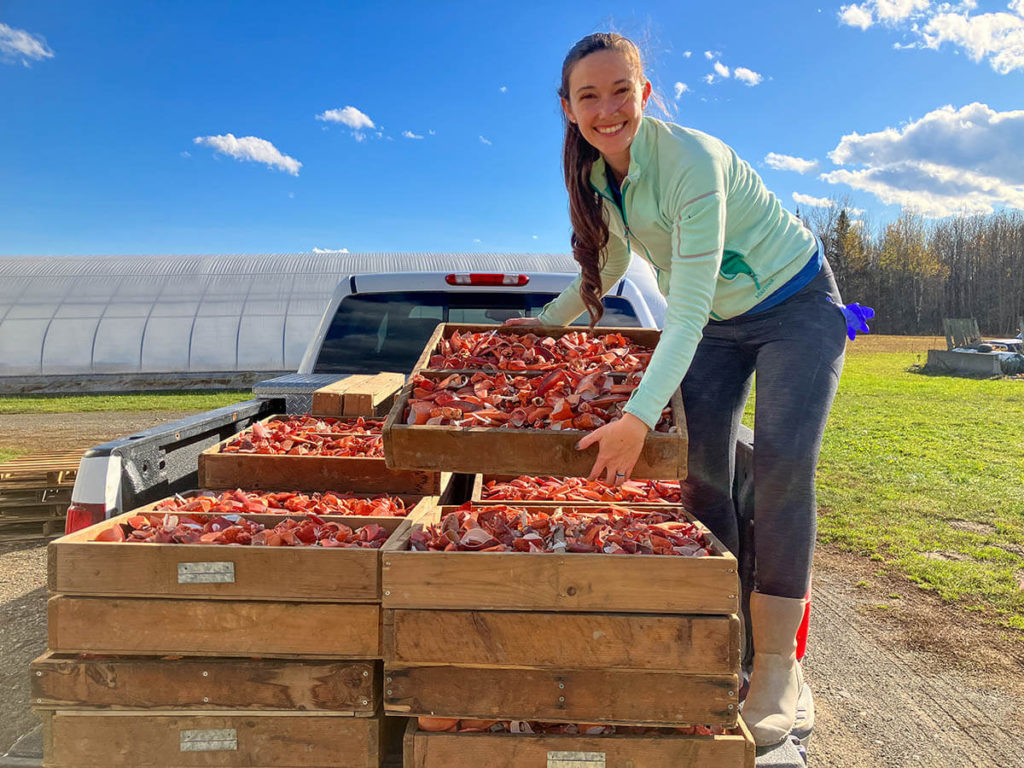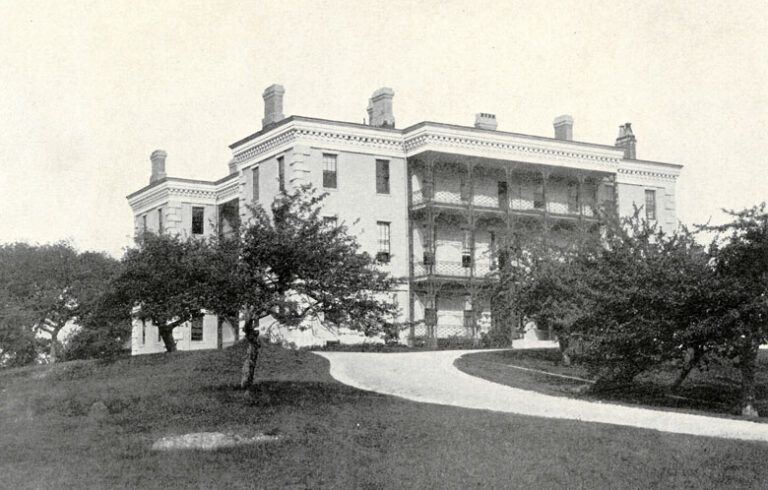Scientists at the University of Maine are studying lobster shells as a possible aid to microbial communities to ward off soilborne potato pathogens. The novel shell-to-spud combination may connect two cornerstones of Maine’s food system and enhance the state’s circular economy.
Potatoes are Maine’s top agricultural commodity with a value of more than $215 million in 2021, according to a National Agricultural Statistics Service report. The crop’s value is in its roots, making it especially susceptible to soilborne diseases. Early potato dying syndrome, a fungal pathogen present in Maine, can decimate as much as half of a crop in severely affected fields.
Katie Ashley, a plant science Ph.D. student in the lab of Associate Professor Jianjun Hao, is assessing how different concentrations of cooked, dried, and ground lobster shells may prevent potato disease.
Ross Sousa, a fourth-year botany major from Somerset, Mass., has also worked on the project as a laboratory technician. In addition to disease resistance, the team is also tracking soil microbial communities, overall crop yield, and plant emergence, vigor, biomass, and height.
The ingredient of interest is chitin, which comprises 75% of lobster exoskeletons and provides structural support.
The ingredient of interest is chitin, which comprises 75% of lobster exoskeletons and provides structural support. Chitin is also present in fungal and bacterial pathogens. Some naturally occurring soil microbes specialize in breaking down this compound. Ashley hypothesizes that adding chitin-rich shells in the fall will cultivate these beneficial microbial communities, creating a line of defense against soilborne pests.
The approach is not without precedent; chitin from other types of shellfish is already part of integrated pest management programs on farms in South Korea, Japan, and California. Based on this past work, Ashley initially also considered oyster shells. She soon realized their rock-like nature makes them difficult to grind into a usable soil amendment, and pivoted to lobster. Hers is the first study to use Maine’s state crustacean and apply the practice to potatoes.
“We’re very fortunate to have both rich agricultural production and a blue economy. It puts Maine in a very unique position,” says Ashley, who earned her master’s in plant pathology from UMaine.
The team completed a greenhouse trial with 90 plants on UMaine’s campus this fall. A field-scale trial in the 2023 growing season will compare plots with different concentrations of chitin, compost, and chemical fumigation at Aroostook Farm in Presque Isle. Ashley and Hao are hoping growers in the region may also open portions of their fields for the study.
Preliminary results indicate that the amendment also benefits above ground plant growth by an average of 200%. Lobster shell fertilizer is not new. Ashley’s study may provide the data to support its growth into a broader market.
The study is an extension of a $10 million multistate research collaboration funded by the U.S. Department of Agriculture (USDA) National Institute of Food and Agriculture and led by the University of Minnesota. Hao is a co-principal investigator on the project, which aims to address key soil issues on potato farms — the mounting pressure of soilborne disease despite fumigation, and declining soil productivity that supports crop health.
“Soil microorganisms are the key to improve soil quality and can be measured as an indicator of soil health. These beneficial microorganisms are highly driven by soil amendments such as crops, plant residues, animal manures, and, in this case, lobster shell meal,” says Hao.
If successful, Ashley’s approach could provide an alternative disease control practice for Maine potato growers. Chemical inputs are the largest operating expense for the state’s growers, according to a 2008 report from the Maine Potato Board.
The concept would also provide a new market for byproducts of the lobster industry.
Curt Brown, a marine biologist at Saco-based seafood supplier and processor Ready Seafood, estimates that shells account for 25% of lobsters’ weight. Nearly half of Maine’s catch is processed rather than sold live, and those shells are largely destined for landfills. A new market for this byproduct would ebb that waste stream.
Ready Seafood and Luke’s Lobster in Portland and Coastal Chitin provided lobster shells for Ashley’s study.





